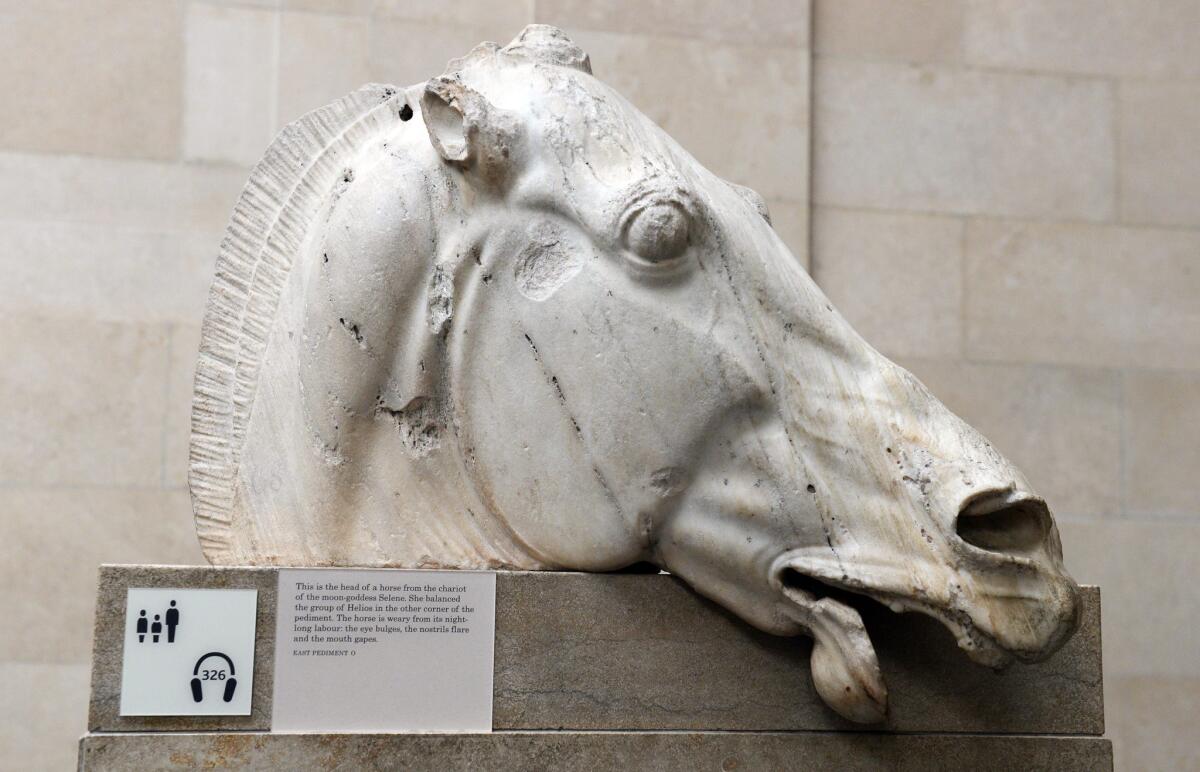Round-Up: Gagosianâs sushi, Duchampâs urinal, George Lucasâ museum

A stash of free photos, the art repatriation debate reignited, Larry Gagosianâs sushi gets reviewed and George Lucasâ museum unveils its initial design schematic. Plus: the literary roots of Cheviot Hills, the controversy behind Marcel Duchampâs urinal, and why L.A. is currently the Marcia Brady of the art world â all in the Round-Up:
â Letâs start with the awesome sauce: The Metropolitan Museum of Art has posted a trove of 400,000 images online for noncommercial use. This means that you can see every last brush stroke in Rembrandtâs 1660 self-portrait. (Colossal)
â Was Marcel Duchampâs urinal really the work of another artist? A report in the Art Newspaper says that it may have belonged to a German baroness and artist by the name of Elsa von Freytag-Loringhoven.
â The design for George Lucasâ Museum of Narrative Art has been unveiled ⌠and it looks like an octopus. Apparently readers of the Chicago Tribune have their own opinions of what it looks like, including âthe worldâs most epic skateboard park.â (Artnet)
â The Gettyâs James Cuno has penned a salvo in Foreign Affairs on why not every ancient artifact should be subject to repatriation. âCultural property should be recognized for what it is: the legacy of humankind and not of the modern nation-state, subject to the political agenda of its current ruling elite.â
â Which brings us to: Why a Seattle museum is returning artifacts to Peru.
â A Swiss museum may be opening itself up to an âavalancheâ of lawsuits if it accepts the trove of work accumulated by hoarder Cornelius Gurlitt, who was found to have Nazi-looted art in his Munich apartment during a tax investigation.
â OMG, you guys, L.A. is, like, having this totally huge cultural boom. Yet another story, this time from The GuardianâŚ
â In related news: New Yorkâs Team Gallery (which represents the digitally minded Cory Arcangel, among others) has opened up a space in L.A. â in a bungalow in Venice of all places. Owner Jose Freire said he wanted to avoid opening another white cube. Sounds great, except that part of having to cross the 405 to get to itâŚ
â A European pianist has asked that a bad review be removed by the Washington Post under Europeâs âright to be forgotten law.â This could be badâŚ
â Speaking of which, a New York Times critic has responded to criticisms of a review in which he referred to a female artist as a âsoccer mom.â
â Arts organizations are hiring their own in-house journalists to tell stories.
â âThe drinks menu arrives in a baby blue, lizard skin hardback folder. If it wasnât a menu, it could be a clutch.â The New York Observer reviews mega-gallerist Larry Gagosianâs new Manhattan restaurant, Kappo Masa. (Hyperallergic)
â Italian art prankster Maurizio Cattelan is now the subject of a full-length doc. Iâm not always in love with his art, but I have a feeling that this is going to be a good romp. (See the trailer embedded in this post.)
â âThereâs a contradiction between how universal or important contemporary art thinks it is to society, and how small it actually is.â Guernica has an interesting interview with Ben Davis, author of â9.5 Theses on Art and Classâ and recently named national art critic at Artnet. I hope ânationalâ means that weâll be seeing this wise and hilarious gentleman in L.A. soonâŚ
â Hyperallergic has an interesting interview with Gabriel PĂŠrez-Barreiro, director of the ColecciĂłn Patricia Phelps Cisneros, about the place of Latin American art in museums.
â Interesting fact: Isamu Noguchi made playgrounds.
â And Frank Gehry made a purse.
â How the tony L.A. enclave of Cheviot Hills helped shape the fiction of Ray Bradbury. And why that landscape may be obliterated by too much McMansion building.
â A new book by San Francisco housing activist James Tracy focuses on how to prevent cities from becoming rich-only playgrounds.
â And last but not least: A book you can drink. Good thing to have on hand for a zombie apocalypse.
Find me on the Twitters @cmonstah.
More to Read
The biggest entertainment stories
Get our big stories about Hollywood, film, television, music, arts, culture and more right in your inbox as soon as they publish.
You may occasionally receive promotional content from the Los Angeles Times.











